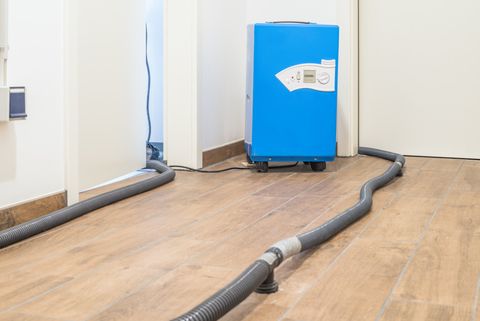building drying
Drying after water damage After water damage, thorough and complete drying of all moist or wet materials is necessary. Building wetness can occur in three variants. Wall and ceiling wetness, cavity wetness and floor wetness, which mostly affects the screed. There are several special technical processes for drying floors.
Air and heat supply When the cause of the water damage has been eliminated or ended, the question arises what to do now. After the removal of standing water, sludge and damage to the building and the surface cleaning, the masonry is professionally dried. Air and heat are used to dry water damage. Depending on the building material from which the masonry is made, the most effective combination and application must be found.
While treatment from the outside is usually sufficient for walls and ceilings, the effort is higher for soaked or soaked floors. For screed drying after water damage, the focus is on effective air introduction for the drying process. Different technical devices must on the one hand lead the necessary amount of air past the wet spots and on the other hand allow enough possibilities that evaporation can take place.
Since warm air binds more moisture than cold air, the air flow is heated in several processes. Cavities are a particular challenge, and drying them is also carried out by supplying process air. If wood is affected as a material, the speed and heating must be specially adjusted. Due to the very different degrees of wetness after water damage in combination with very different material properties, the drying time can only be approximated in advance. The actual point in time of complete dryness is determined by means of permanent measurements during drying.
Fans, bores and air nozzles For drying walls and ceilings that are not made of hollow blocks, fans, blowers and drying devices are set up that are directed towards the surfaces. In the case of brick masonry, the surfaces are warmed up at the same time by infrared emitters. Air vents must be created to dry cavities. Similar to screed drying, core holes or saw cuts are used for this. With these processes, the evaporation must be taken into account, which is made possible by as many air inlet and outlet holes. In the event of water damage or wet flooring, the structure of the floor is crucial. The basic technology consists of placing top nozzles or blowing plates on made openings that introduce process air. Three methods are common: core drilling joint cuts joint cross drilling (for tile floors) Separate and individually adapted techniques are necessary for floating screeds and screed floors with separating layers. The screed types and their composition must also be taken into account. The dosage of air pressure and, if necessary, heat supply must be matched to the type of screed.









